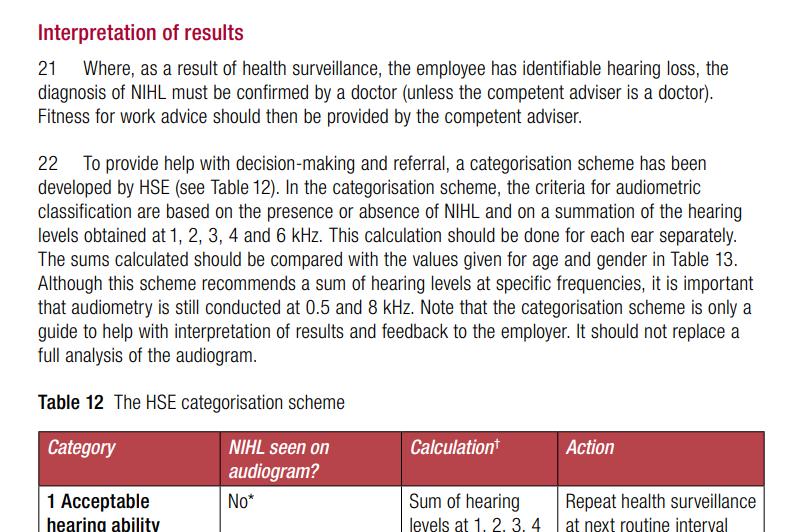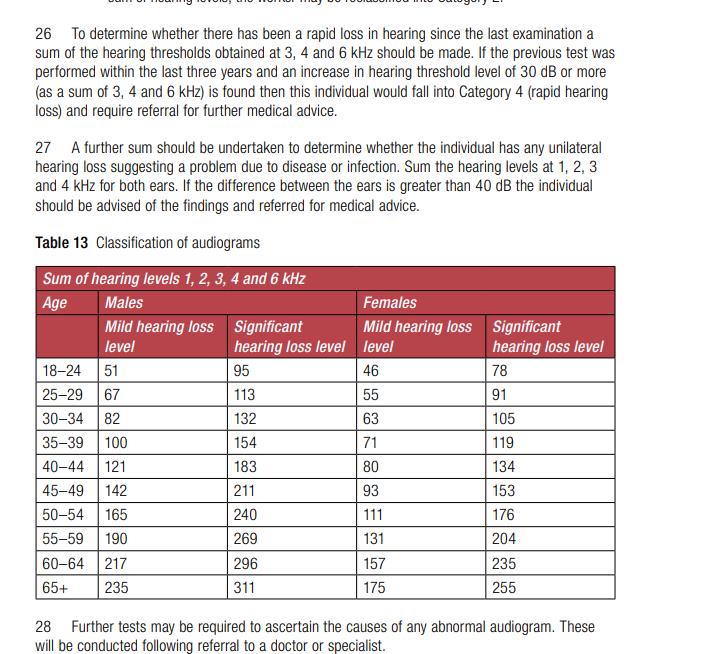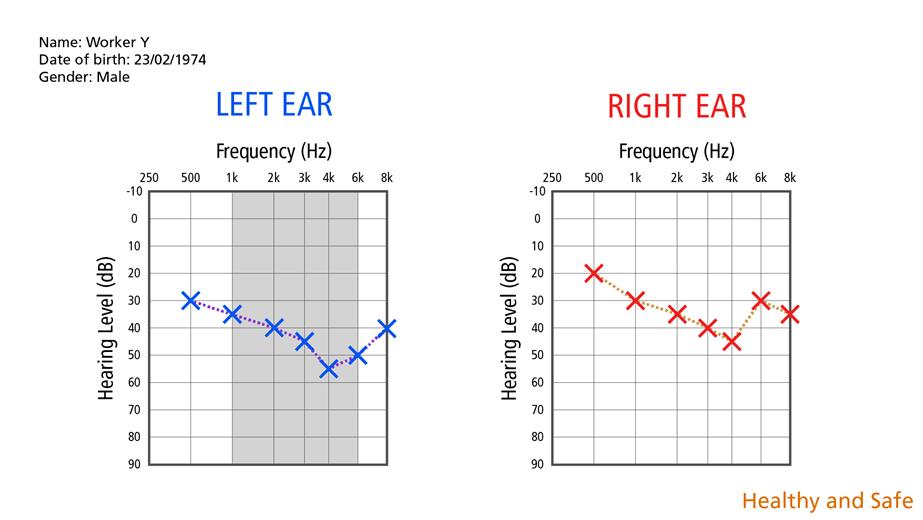Question
Understand the table 12 and its impact on answers. Supporting document 5 is below: Understand the table detached from the health and safety executive site
Understand the table 12 and its impact on answers.



Supporting document 5 is below:
Understand the table detached from the health and safety executive site HSE UK.

Noise and health surveillance
4 (a) Suggest reasons why audiometry testing has been recommended for workers in the tableting department at Nutripex.
(b) (i) Discuss what the information in supporting document 5 shows.
(ii) Using the HSE’s L108 appendix 4, explain how the information in supporting document 5 could be used to aid decision making with a hearing health surveillance programme at Nutripex.
(iii) Use the numerical information in the shaded area of supporting document 5 and in appendix 4 of L108 to determine the outcome of the audiometry testing for Worker Y. Note: You should use simple calculations to support your answer.
(c) Based on the information in supporting document 5
(i) what effects on their hearing could Worker Y be experiencing?
(ii) describe the likely physical changes in the inner ears of Worker Y.
(d) Comment on why introducing audiometry testing for some workers might be problematic for Nutripex. (e) Audiometry testing may sometimes not produce an accurate representation of the effects of noise exposure on the hearing of Nutripex workers. Give reasons why this may be the case with Worker Y.
Interpretation of results Where, as a result of health surveillance, the employee has identifiable hearing loss, the diagnosis of NIHL must be confirmed by a doctor (unless the competent adviser is a doctor). Fitness for work advice should then be provided by the competent adviser. 22 To provide help with decision-making and referral, a categorisation scheme has been developed by HSE (see Table 12). In the categorisation scheme, the criteria for audiometric classification are based on the presence or absence of NIHL and on a summation of the hearing levels obtained at 1, 2, 3, 4 and 6 kHz. This calculation should be done for each ear separately. The sums calculated should be compared with the values given for age and gender in Table 13. Although this scheme recommends a sum of hearing levels at specific frequencies, it is important that audiometry is still conducted at 0.5 and 8 kHz. Note that the categorisation scheme is only a guide to help with interpretation of results and feedback to the employer. It should not replace a full analysis of the audiogram. Table 12 The HSE categorisation scheme Category 1 Acceptable hearing ability NIHL seen on Calculation* audiogram? No* Sum of hearing levels at 1. 2. 3. 4 Action Repeat health surveillance. at next routine interval
Step by Step Solution
There are 3 Steps involved in it
Step: 1

Get Instant Access to Expert-Tailored Solutions
See step-by-step solutions with expert insights and AI powered tools for academic success
Step: 2

Step: 3

Ace Your Homework with AI
Get the answers you need in no time with our AI-driven, step-by-step assistance
Get Started


